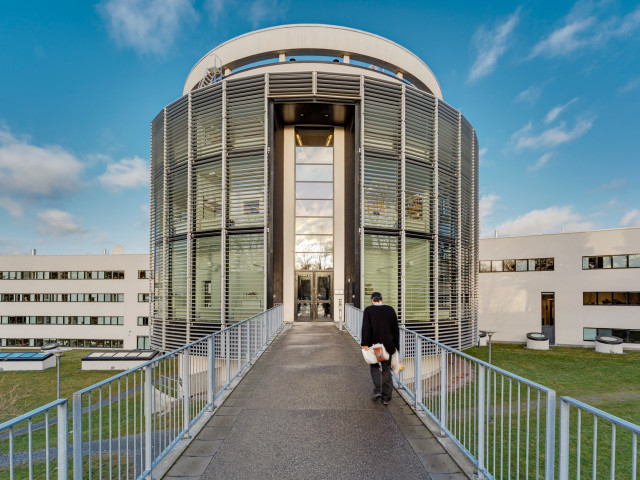Laserprinciper, den första lasern, historik, laserljusets egenskaper, laserresonatorn, lasermediet, laserdiagnostik, olika lasertyper, tillämpningar som:Holografi, Optisk kommunikation, CD-spelare, Flytande kristaller, Lasern inom miljöteknik, Lasern inom medicin, Lasersvetsning och skärning, LIBS-laser inom materialteknik, Laserjonisation vid CERN och Laserfusion.
SK181N Laser med tillämpningar 6,0 hp
Denna kurs är avvecklad.
Avvecklingsbeslut:
Ingen information tillagd
Information per kursomgång
Kursomgångar saknas för aktuella eller kommande terminer.
Kursplan som PDF
Notera: all information från kursplanen visas i tillgängligt format på denna sida.
Kursplan SK181N (VT 2009–)Innehåll och lärandemål
Kursinnehåll
Lärandemål
Kursen skall ge kännedom om laserns uppbyggnad och dess egenskaper. Kursen skall också visa hur lasern utnyttjas för tillämpningar inom både teknik, miljö och sjukvård. Teknologen skall efter kursen kunna: lösa problem rörande laserresonatorns egenskaper och uppbyggnad förklara och kunna utföra beräkningar avseende laserns modstruktur och spektrala egenskaper, frekvensvillkor och modstruktur i en laser och på lasermediet redogöra hur diagnostik utförs avseende laserns egenskaper göra beräkningar på Gaussiska strålar göra uppskattningar på vilka energier som krävs för laserskärning och smältning redogöra moderna lasertillämpningar inom optisk kommunikation, CD-DVD-tillämpningar, lasersvetsning, holografi, LIBS redogöra för lasertillämpningar inom fusion och annan grundvetenskaplig forskning översiktligt redogöra för frontlinjeforskning inom ultrasnabb fysik, LIBS, Laserfusion.
Kurslitteratur och förberedelser
Särskild behörighet
För fristående studerande krävs:
- Grundläggande behörighet för högskolestudier (avslutad gymnasieutbildning el motsv inkl engelskaoch svenska. Undantag från behörighetskrav i svenska ges om undervisningsspråket är engelska) samt
- matematik D, fysik B och kemi A med betyget lägst godkänd (el motsv enl äldre skolformer).
Kurslitteratur
L-E. Berg, Laser med tillämningar, internetlärobok: http://kurslab.physics.kth.se/~berg/Laser.html
Examination och slutförande
Betygsskala
Examination
- TEN2 - Tentamen, 3,0 hp, betygsskala: A, B, C, D, E, FX, F
- TEN1 - Tentamen, 3,0 hp, betygsskala: A, B, C, D, E, FX, F
Examinator beslutar, baserat på rekommendation från KTH:s handläggare av stöd till studenter med funktionsnedsättning, om eventuell anpassad examination för studenter med dokumenterad, varaktig funktionsnedsättning.
Examinator får medge annan examinationsform vid omexamination av enstaka studenter.
När kurs inte längre ges har student möjlighet att examineras under ytterligare två läsår.
Prov via internet
Övriga krav för slutbetyg
Kursen examineras genom två skriftliga tentamina (TEN1; 3 hp, betygsskala A/B/C/D/E/Fx/F), (TEN2; 3 hp, betygsskala A/B/C/D/E/Fx/F).
Examinator
Etiskt förhållningssätt
- Vid grupparbete har alla i gruppen ansvar för gruppens arbete.
- Vid examination ska varje student ärligt redovisa hjälp som erhållits och källor som använts.
- Vid muntlig examination ska varje student kunna redogöra för hela uppgiften och hela lösningen.
Ytterligare information
Kursrum i Canvas
Ges av
Huvudområde
Utbildningsnivå
Övrig information
Internetkurs. Kan läsas när som helst.